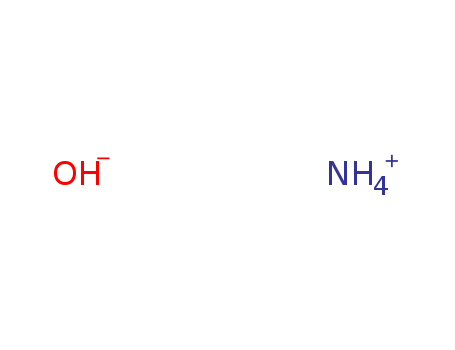10.1016/j.molstruc.2010.05.038
The study presents a density functional theory (DFT) and experimental investigation of N,N'-bis(3-carboxy,4'-aminophenyl)-1,4-quinonediimine, a carboxyl-substituted aniline trimer. The research aims to understand the electronic and steric effects in co-polymers of aniline and anthranilic acid, and to explore the trimer's potential in corrosion inhibition. Chemicals used include 1,4-phenylenediamine, hydrochloric acid, ammonium persulfate, anthranilic acid, and ammonium hydroxide for the synthesis of the trimer. The synthesized trimer was then subjected to various experimental analyses, including UV-vis, near-IR, and NMR spectroscopy, to study its properties. The study also utilized computational methods to optimize the structures of the trimer's isomers and calculate their electronic properties, providing insights into the trimer's behavior in different oxidation states and solvent environments. The purpose of these chemicals was to synthesize the trimer and understand its redox properties, its ability to 'self-dope', and its effectiveness in corrosion inhibition, particularly in alkaline environments where standard oligo- and polyanilines fail.
10.1016/j.inoche.2008.05.023
The research aimed to develop a new microwave-assisted synthesis methodology for the preparation of ferrocene amides, which are derivatives of ferrocene with widespread applications in chemistry. The study utilized a direct 1H-Benzotriazole/SOCl2 methodology to derivatize ferrocene carboxylic acid, creating N-ferrocenoyl benzotriazole as a novel starting material for the functionalization of the ferrocene ring. This compound was then reacted with mono- and di-amines under microwave irradiation to synthesize ferrocene mono- and di-amides in high purity and good yield. The researchers concluded that microwave synthesis offers advantages in terms of reaction time and product yield compared to conventional methods, and their approach using N-ferrocenoyl benzotriazole as a starting material is a new, easy, and fast synthetic method for the preparation of ferrocene amides. The chemicals used in the process included ferrocene carboxylic acid, 1H-benzotriazole, thionyl chloride (SOCl2), and various amines such as ammonium hydroxide, cyclohexylamine, piperidine, morpholine, and others listed in Table 1 of the article.
10.1039/c2nj20799k
The study focuses on the synthesis, characterization, and investigation of the photophysical and electrochemical properties of shape-persistent metallodendrimers based on htpy-RuII-tpyi or htpy-FeII-tpyi connectivity. These metallodendrimers were developed using a self-assembly strategy and were fully characterized by techniques such as 1H and 13C NMR, traveling wave ion mobility mass spectrometry (TWIM MS), single crystal X-ray, UV-vis absorption, photoluminescence, and cyclic voltammetry. The researchers observed a significant increase in drift times with increasing generation of these complexes, correlating with the change in molecular size. Additionally, the photophysical properties, such as molar extinction coefficients, and electrochemical stability of the complexes varied noticeably with size and metal ion center, suggesting potential applications in catalysis, sensing, and light-harvesting devices.
10.1007/s11164-018-3659-7
This study presents the synthesis of montmorillonite (MMT) supported Fe3O4 magnetic nanoparticles, which were used as heterogeneous nanocatalysts for the one-pot synthesis of indeno[1,2-b]indolone derivatives in aqueous media. The MMT@Fe3O4 nanocomposites were characterized using various techniques including X-ray diffraction (XRD), scanning electron microscopy (SEM), energy dispersive X-ray spectroscopy (EDX), vibrating sample magnetometer (VSM), thermogravimetric analysis (TGA), and Fourier transform infrared spectroscopy (FT-IR). The catalyst exhibited high efficiency in promoting the cyclocondensation of ninhydrin, 1,3-diketone compounds, and amine derivatives to generate the desired indeno[1,2-b]indolone derivatives in excellent yields under mild conditions. This study highlights the advantages of using MMT@Fe3O4 as an environmentally friendly, cost-effective, and recyclable catalyst, providing a green and efficient approach for the synthesis of these heterocyclic compounds of biological and pharmacological importance.
10.1016/j.tetlet.2012.07.064
The research focuses on the synthesis and application of 4-isocyanopermethylbutane-1,1,3-triol (IPB), a new convertible isonitrile (isocyanide) for isocyanide-based multicomponent reactions (IMCRs) such as Ugi, Ugi-Smiles, and Passerini reactions. The purpose of this study is to develop a reagent that can generate highly activated N-acylpyrroles, which can then be transformed into various functionalities like carboxylic acids, esters, amides, alcohols, and olefins upon treatment with nucleophiles. The research concludes that IPB serves as a neutral carbanion equivalent to formate (HO2C) and carboxylates or carboxamides (RNu-CO), and it can be prepared in multigram scale from readily available starting materials with great stability in handling and storage. It shows good to excellent reactivity in different IMCRs and is compatible with numerous functionalities, making it applicable to many highly functionalized molecules. The generated N-acylpyrrole intermediates are stable and reactive, allowing for the transformation into other carbonyl functions in good yields. The research also demonstrates the utility of IPB in Ugi-Smiles and Passerini reactions, leading to the successful conversion of the IMCR products into the respective N-acylpyrroles and subsequently into carboxylic acids in good yield and chemoselectivity. Chemicals used in the process include IPB, various carboxylic acids, amines, aldehydes, and nucleophiles such as 4-fluorophenethylamine, piperidine, NH4OH, sodium methoxide, and lithium hydroxide. The study also involves the use of reagents like camphorsulfonic acid (CSA), quinoline, and trifluoroacetic acid (TFA) for the conversion of Ugi products into N-acylpyrroles.



 C,
C, N
N


